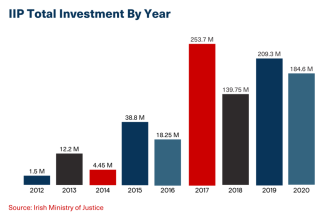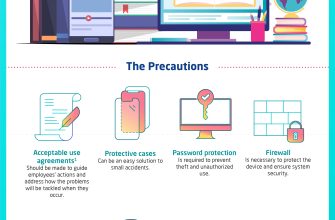“Learn how to safeguard your employees from constructive dismissal with expert HR solutions.”
This article discusses real-life examples of constructive dismissal, a form of wrongful termination where an employer creates a hostile work environment that forces an employee to resign. It also provides HR solutions to protect employees from such situations.
Understanding Constructive Dismissal in the UK
Constructive dismissal is a term used to describe a situation where an employee is forced to resign from their job due to the actions of their employer. This can occur when an employer breaches the terms of the employment contract, making it impossible for the employee to continue working. In the UK, constructive dismissal is considered to be a form of unfair dismissal, and employees who have been constructively dismissed may be entitled to compensation.
There are many different examples of constructive dismissal in the UK, ranging from coercive management to unlawful termination. Coercive management occurs when an employer uses bullying or intimidation tactics to force an employee to resign. This can include verbal abuse, threats, and excessive monitoring of the employee’s work. In some cases, an employer may also make unreasonable demands on the employee, such as requiring them to work long hours without adequate compensation.
Another example of constructive dismissal is unlawful termination. This occurs when an employer terminates an employee’s contract without following the proper procedures or providing a valid reason for the termination. This can include firing an employee without notice, terminating their contract due to their race or gender, or dismissing them for whistleblowing or other protected activities.
If you are an employer, it is important to take steps to protect your employees from constructive dismissal. One of the most important things you can do is to ensure that you are following all relevant employment laws and regulations. This includes providing your employees with a fair and reasonable contract, paying them a fair wage, and providing them with a safe and healthy working environment.
You should also take steps to address any issues that arise in the workplace. This may include investigating complaints of bullying or harassment, providing training to managers and employees on how to prevent these issues, and taking disciplinary action against employees who engage in inappropriate behavior.
If you are an employee who believes that you have been constructively dismissed, it is important to seek legal advice as soon as possible. You may be entitled to compensation for any losses you have suffered as a result of your dismissal, including lost wages, benefits, and other expenses.
To protect your employees from constructive dismissal, it is also important to have a clear and transparent grievance procedure in place. This should include a process for employees to raise concerns or complaints, as well as a mechanism for resolving disputes and conflicts in the workplace.
In addition, you should provide your employees with access to support and advice, such as an employee assistance program or a human resources department. This can help to ensure that your employees feel valued and supported, and can help to prevent issues from escalating into more serious problems.
In conclusion, constructive dismissal is a serious issue that can have a significant impact on both employers and employees. By taking steps to prevent and address issues in the workplace, employers can protect their employees from this form of unfair dismissal and create a positive and productive working environment. If you are an employee who believes that you have been constructively dismissed, it is important to seek legal advice and explore your options for compensation.
Real-life Examples of Constructive Dismissal
Constructive dismissal is a term used to describe a situation where an employee is forced to resign due to the employer’s conduct. This can happen when an employer makes significant changes to an employee’s job without their consent, or when an employer creates a hostile work environment that makes it impossible for the employee to continue working. In this article, we will explore some real-life examples of constructive dismissal and discuss HR solutions to protect your employees.
One example of constructive dismissal is when an employer engages in coercive management practices. This can include things like micromanaging, setting unrealistic expectations, and constantly criticizing an employee’s work. In one case, an employee was forced to resign after her boss repeatedly criticized her work and threatened to fire her if she didn’t improve. The employee felt that she had no choice but to resign, as the constant criticism was causing her significant stress and anxiety.
Another example of constructive dismissal is when an employer engages in discriminatory behavior. This can include things like making derogatory comments about an employee’s race, gender, or sexual orientation, or refusing to provide reasonable accommodations for an employee’s disability. In one case, an employee was forced to resign after her boss repeatedly made sexist comments and refused to provide her with the accommodations she needed to do her job.
A third example of constructive dismissal is when an employer engages in unlawful termination. This can include things like firing an employee for reporting illegal activity or for refusing to engage in unethical behavior. In one case, an employee was fired after she reported her boss for embezzlement. The employee felt that she had no choice but to resign, as she feared retaliation from her boss if she continued to work for the company.
So, what can HR professionals do to protect their employees from constructive dismissal? One solution is to create a culture of respect and inclusivity in the workplace. This can include things like providing diversity and inclusion training for all employees, implementing policies that prohibit discrimination and harassment, and creating a safe and supportive environment for employees to report any concerns they may have.
Another solution is to provide employees with clear job descriptions and performance expectations. This can help to prevent micromanagement and ensure that employees understand what is expected of them. It can also help to prevent employees from feeling like they are being unfairly criticized or held to unrealistic standards.
Finally, HR professionals can work to create a fair and transparent disciplinary process. This can include things like providing employees with clear guidelines for disciplinary action, ensuring that all disciplinary actions are documented and communicated clearly to the employee, and providing employees with an opportunity to appeal any disciplinary action that they feel is unfair.
In conclusion, constructive dismissal is a serious issue that can have significant consequences for both employees and employers. By creating a culture of respect and inclusivity, providing clear job descriptions and performance expectations, and implementing a fair and transparent disciplinary process, HR professionals can help to protect their employees from this type of behavior. By doing so, they can create a workplace that is safe, supportive, and productive for all employees.
How to Prove Constructive Dismissal
Constructive dismissal is a term used to describe a situation where an employee is forced to resign due to the employer’s conduct. This can include a range of actions, from coercive management to unlawful termination. In this article, we will explore real-life examples of constructive dismissal and provide HR solutions to protect your employees.
One of the most common forms of constructive dismissal is when an employer creates a hostile work environment. This can include bullying, harassment, or discrimination. For example, if an employee is constantly belittled or subjected to offensive comments, they may feel that they have no choice but to resign. In this case, the employer’s conduct has effectively forced the employee to leave their job.
Another example of constructive dismissal is when an employer changes the terms of an employee’s contract without their agreement. This can include reducing their salary, changing their working hours, or altering their job responsibilities. If these changes are significant enough to make the job untenable, the employee may feel that they have no choice but to resign.
In some cases, an employer may engage in coercive management practices that make it impossible for an employee to continue working. This can include excessive monitoring, unrealistic targets, or unreasonable demands. If an employee feels that they are being set up to fail, they may feel that they have no choice but to resign.
Proving constructive dismissal can be challenging, as it requires demonstrating that the employer’s conduct was so severe that it effectively forced the employee to resign. However, there are several steps that employers can take to protect their employees and prevent constructive dismissal from occurring.
Firstly, it is important to have clear policies in place that prohibit bullying, harassment, and discrimination. These policies should be communicated to all employees and enforced consistently. If an employee raises a complaint, it should be taken seriously and investigated promptly.
Secondly, employers should ensure that any changes to an employee’s contract are made with their agreement. This can be done through a formal consultation process, where the employee is given the opportunity to provide feedback and negotiate the terms of the change.
Thirdly, employers should ensure that their management practices are fair and reasonable. This can include providing adequate training and support to managers, setting realistic targets, and ensuring that employees are not subjected to excessive monitoring or unreasonable demands.
Finally, if an employee raises a complaint or expresses concerns about their working conditions, it is important to take these seriously and address them promptly. This can help to prevent the situation from escalating and potentially leading to constructive dismissal.
In conclusion, constructive dismissal is a serious issue that can have a significant impact on employees and employers alike. By understanding the signs of constructive dismissal and taking proactive steps to prevent it from occurring, employers can protect their employees and create a positive and productive work environment.
The Legal Consequences of Constructive Dismissal
Constructive dismissal is a term used to describe a situation where an employee is forced to resign from their job due to the employer’s conduct. This can include a range of actions, from coercive management to unlawful termination. In this article, we will explore some real-life examples of constructive dismissal and provide HR solutions to protect your employees.
One example of coercive management leading to constructive dismissal is when an employer sets unrealistic targets or expectations for an employee. This can cause undue stress and pressure, leading the employee to feel like they have no choice but to resign. In some cases, the employer may even use bullying tactics to try and force the employee out.
Another example of constructive dismissal is when an employer changes the terms of an employee’s contract without their consent. This can include reducing their hours, changing their job duties, or reducing their pay. If the changes are significant enough, the employee may feel like they have no choice but to resign.
Unlawful termination is another form of constructive dismissal. This occurs when an employer terminates an employee’s contract without a valid reason or without following the proper procedures. For example, if an employer terminates an employee’s contract because they are pregnant or because of their race, this would be considered unlawful termination.
So, what can HR professionals do to protect their employees from constructive dismissal? The first step is to ensure that all employees are aware of their rights and the procedures for raising concerns or making complaints. This can include providing training on workplace policies and procedures, as well as creating a safe and supportive environment where employees feel comfortable speaking up.
It is also important for HR professionals to be proactive in identifying potential issues before they escalate. This can involve conducting regular employee surveys or focus groups to gather feedback on workplace culture and identifying any areas for improvement. HR professionals can also work closely with managers to ensure that they are aware of their responsibilities and are trained in effective people management.
If an employee does raise concerns about constructive dismissal, it is important for HR professionals to take these concerns seriously and investigate them thoroughly. This may involve conducting interviews with the employee and any witnesses, reviewing relevant documentation, and seeking legal advice if necessary.
In some cases, it may be possible to resolve the issue through mediation or other forms of alternative dispute resolution. However, if the employee has already resigned, it may be necessary to consider legal action to protect their rights and seek compensation for any losses they have suffered.
In conclusion, constructive dismissal can have serious legal and financial consequences for employers. HR professionals have a key role to play in protecting their employees from these risks by creating a supportive and inclusive workplace culture, identifying potential issues early, and taking prompt and effective action to address any concerns that arise. By doing so, they can help to ensure that their employees feel valued, respected, and protected from the risks of constructive dismissal.
HR Solutions to Prevent Constructive Dismissal

Constructive dismissal is a term used to describe a situation where an employee is forced to resign due to the employer’s conduct. This can happen when an employer makes significant changes to an employee’s job without their consent, or when an employer creates a hostile work environment that makes it impossible for the employee to continue working. In this article, we will discuss real-life examples of constructive dismissal and HR solutions to protect your employees.
One example of constructive dismissal is when an employer engages in coercive management practices. This can include bullying, intimidation, and harassment. For example, an employer may constantly criticize an employee’s work, yell at them in front of their colleagues, or threaten to fire them if they do not meet unrealistic targets. These actions can create a hostile work environment that makes it impossible for the employee to continue working.
Another example of constructive dismissal is when an employer makes significant changes to an employee’s job without their consent. This can include reducing their hours, changing their job duties, or relocating them to a different office. For example, an employer may reduce an employee’s hours without warning, making it difficult for them to pay their bills. Alternatively, an employer may change an employee’s job duties without providing them with the necessary training or support, making it impossible for them to perform their job effectively.
In some cases, constructive dismissal can lead to unlawful termination. This occurs when an employer terminates an employee’s employment without a valid reason or without following the proper procedures. For example, an employer may terminate an employee’s employment because they complained about the employer’s conduct, or because they took time off work due to a medical condition.
To protect your employees from constructive dismissal and unlawful termination, it is important to have clear policies and procedures in place. This includes having a code of conduct that outlines acceptable behavior in the workplace, as well as a grievance procedure that allows employees to raise concerns about their working conditions.
It is also important to provide training to managers and supervisors on how to manage employees effectively. This includes training on how to provide feedback and support to employees, as well as how to handle difficult situations such as conflicts or performance issues.
In addition, it is important to have a clear process for making changes to an employee’s job duties or working conditions. This includes consulting with the employee and providing them with the necessary training and support to perform their job effectively.
Finally, it is important to ensure that any termination of employment is done in accordance with the law. This includes providing the employee with notice of termination, paying them any outstanding wages or benefits, and following any relevant procedures such as those outlined in the employment contract or collective agreement.
In conclusion, constructive dismissal is a serious issue that can have a significant impact on employees’ lives. By implementing clear policies and procedures, providing training to managers and supervisors, and following the law when terminating employment, employers can protect their employees from this type of harm. By doing so, they can create a positive and productive work environment that benefits everyone involved.
The Role of HR in Handling Constructive Dismissal Claims
Constructive dismissal is a term used to describe a situation where an employee is forced to resign due to the employer’s conduct. This can include a range of actions, from a change in job duties to harassment or discrimination. In some cases, constructive dismissal can be difficult to prove, but it is important for employers to take steps to prevent it from occurring in the first place.
One of the key roles of HR in handling constructive dismissal claims is to ensure that employees are aware of their rights and the procedures for making a complaint. This includes providing training on workplace policies and procedures, as well as ensuring that employees have access to a grievance procedure if they feel that they have been unfairly treated.
Another important aspect of HR’s role in handling constructive dismissal claims is to investigate any complaints that are made. This involves gathering evidence, interviewing witnesses, and assessing the credibility of the employee’s claims. HR should also ensure that any complaints are dealt with in a timely and confidential manner, and that employees are protected from retaliation for making a complaint.
In some cases, HR may need to take more proactive steps to prevent constructive dismissal from occurring. This can include implementing policies and procedures to prevent harassment and discrimination, providing training on effective communication and conflict resolution, and ensuring that employees have access to support services such as counseling or mediation.
One real-life example of constructive dismissal occurred in a case involving a sales manager who was forced to resign after being subjected to a hostile work environment. The manager had been subjected to verbal abuse and harassment by his supervisor, who had also made derogatory comments about his race and ethnicity. Despite raising his concerns with HR, the manager’s complaints were not taken seriously, and he eventually felt that he had no choice but to resign.
In another case, a software developer was constructively dismissed after being demoted and given a new job description that was significantly different from his previous role. The developer had been promised a promotion and a pay increase, but instead was given a job that was less challenging and paid less than his previous role. Despite raising his concerns with HR, the developer was told that he had no choice but to accept the new role or resign.
In both of these cases, the employees were able to successfully claim constructive dismissal and were awarded compensation. However, these cases highlight the importance of HR taking proactive steps to prevent constructive dismissal from occurring in the first place.
One way that HR can protect employees from constructive dismissal is by ensuring that they have access to a fair and transparent performance management system. This can include setting clear expectations for job performance, providing regular feedback and coaching, and ensuring that employees have the opportunity to improve their skills and knowledge.
HR can also protect employees from constructive dismissal by ensuring that they are treated fairly and consistently. This includes ensuring that all employees are subject to the same policies and procedures, and that there is no discrimination or favoritism in the workplace.
In conclusion, constructive dismissal is a serious issue that can have a significant impact on employees and their careers. HR has an important role to play in preventing constructive dismissal from occurring, by ensuring that employees are aware of their rights and the procedures for making a complaint, investigating any complaints that are made, and taking proactive steps to prevent harassment and discrimination. By doing so, HR can help to create a positive and productive workplace culture that benefits both employees and the organization as a whole.
The Importance of Documenting Employee Complaints
Constructive dismissal is a term used to describe a situation where an employee is forced to resign due to the employer’s conduct. This can include a range of actions, from coercive management to unlawful termination. In this article, we will explore real-life examples of constructive dismissal and provide HR solutions to protect your employees.
One of the most common forms of constructive dismissal is coercive management. This occurs when an employer creates a hostile work environment that makes it impossible for an employee to continue working. For example, an employer may constantly criticize an employee’s work, refuse to provide necessary resources, or assign unreasonable tasks. Over time, this behavior can cause the employee to feel overwhelmed and stressed, leading them to resign.
Another form of constructive dismissal is unlawful termination. This occurs when an employer terminates an employee without a valid reason or without following proper procedures. For example, an employer may terminate an employee because of their race, gender, or age, or they may terminate an employee without providing notice or severance pay. In both cases, the employee may feel that they have no choice but to resign.
To protect your employees from constructive dismissal, it is important to document any complaints or concerns they may have. This can include complaints about their workload, their manager’s behavior, or any discriminatory actions they may have experienced. By documenting these complaints, you can demonstrate that you take your employees’ concerns seriously and are committed to creating a safe and respectful workplace.
In addition to documenting complaints, it is important to investigate them thoroughly. This can involve speaking with the employee who made the complaint, as well as any witnesses or other employees who may have relevant information. By conducting a thorough investigation, you can determine whether the complaint is valid and take appropriate action to address it.
If you do identify a problem, it is important to take swift action to address it. This may involve providing additional resources to an overworked employee, disciplining a manager who has engaged in inappropriate behavior, or terminating an employee who has engaged in discriminatory actions. By taking action, you can demonstrate that you are committed to creating a safe and respectful workplace for all employees.
Finally, it is important to communicate with your employees throughout the process. This can involve providing regular updates on the status of an investigation, as well as any actions you have taken to address the problem. By communicating with your employees, you can demonstrate that you value their input and are committed to creating a transparent and accountable workplace.
In conclusion, constructive dismissal is a serious issue that can have a significant impact on your employees’ well-being and your organization’s reputation. By documenting complaints, investigating them thoroughly, taking swift action, and communicating with your employees, you can protect your employees from this harmful practice and create a safe and respectful workplace for all.
The Impact of Coercive Management on Employee Mental Health
Constructive dismissal is a term used to describe a situation where an employee is forced to resign due to the employer’s conduct. This can include a range of behaviors, from bullying and harassment to changes in job duties or working conditions. In some cases, constructive dismissal can be so severe that it amounts to unlawful termination.
One of the most common causes of constructive dismissal is coercive management. This is when a manager or supervisor uses threats, intimidation, or other forms of pressure to force an employee to comply with their demands. Coercive management can take many forms, from verbal abuse and shouting to withholding promotions or bonuses.
The impact of coercive management on employee mental health can be severe. Employees who are subjected to this type of behavior may experience anxiety, depression, and other mental health issues. They may also feel isolated and unsupported, which can lead to a sense of helplessness and despair.
To protect your employees from the negative effects of coercive management, it is important to create a workplace culture that values respect, communication, and collaboration. This can be achieved through training programs, policies and procedures that promote positive workplace relationships, and regular feedback and performance reviews.
Another way to protect your employees from constructive dismissal is to provide them with a safe and confidential way to report any concerns they may have about their working conditions. This can be done through an employee assistance program, a hotline, or a designated HR representative.
If you suspect that an employee is being subjected to coercive management, it is important to take action immediately. This may involve conducting an investigation, providing support and counseling to the employee, and taking disciplinary action against the manager or supervisor responsible.
In some cases, constructive dismissal may be so severe that it amounts to unlawful termination. This can occur when an employee is forced to resign due to the employer’s conduct, such as harassment, discrimination, or retaliation. If an employee believes that they have been unlawfully terminated, they may be able to file a claim with the Equal Employment Opportunity Commission (EEOC) or a state labor agency.
To avoid the risk of constructive dismissal and unlawful termination, it is important to have clear policies and procedures in place that outline the expectations for workplace behavior and the consequences for violating those expectations. This can include a code of conduct, anti-harassment and discrimination policies, and a grievance procedure.
In conclusion, coercive management can have a significant impact on employee mental health and can lead to constructive dismissal and unlawful termination. To protect your employees, it is important to create a workplace culture that values respect, communication, and collaboration, provide a safe and confidential way for employees to report concerns, take action immediately if you suspect coercive management is occurring, and have clear policies and procedures in place to prevent and address workplace misconduct. By taking these steps, you can create a positive and productive workplace that supports the well-being of your employees.
How to Address Coercive Management in the Workplace
Constructive dismissal is a term used to describe a situation where an employee is forced to resign due to the employer’s conduct. This can include a range of behaviors, from bullying and harassment to changes in job duties or working conditions. In some cases, constructive dismissal can even be considered unlawful termination.
One of the most common forms of constructive dismissal is coercive management. This occurs when an employer uses threats, intimidation, or other forms of pressure to force an employee to comply with their demands. This can include unreasonable deadlines, excessive workloads, or even threats of physical harm.
Coercive management can have a significant impact on an employee’s mental and physical health, as well as their job performance. It can lead to high levels of stress, anxiety, and burnout, which can ultimately result in the employee resigning from their position.
To address coercive management in the workplace, it is important for employers to create a culture of respect and open communication. This can be achieved through regular training and education on workplace harassment and bullying, as well as the implementation of clear policies and procedures for reporting and addressing these issues.
Employers should also ensure that they are providing their employees with reasonable workloads and deadlines, and that they are not placing undue pressure on them to meet unrealistic expectations. This can be achieved through regular performance evaluations and feedback, as well as the provision of adequate resources and support.
In addition to addressing coercive management, employers should also be aware of the potential for unlawful termination in cases of constructive dismissal. This can occur when an employee is forced to resign due to the employer’s conduct, and can result in legal action being taken against the employer.
To protect their employees from unlawful termination, employers should ensure that they are following all relevant employment laws and regulations. This includes providing employees with notice of any changes to their job duties or working conditions, as well as ensuring that they are not discriminating against employees based on their race, gender, age, or other protected characteristics.
Employers should also be aware of the potential for retaliation in cases of constructive dismissal. This can occur when an employee reports harassment or other forms of misconduct, and the employer responds by taking adverse action against them, such as demotion or termination.
To prevent retaliation, employers should have clear policies and procedures in place for reporting and addressing harassment and other forms of misconduct. They should also ensure that they are providing their employees with a safe and supportive work environment, and that they are not taking adverse action against employees who report misconduct.
In conclusion, coercive management is a serious issue that can lead to constructive dismissal and even unlawful termination. To address this issue, employers should create a culture of respect and open communication, provide their employees with reasonable workloads and deadlines, and ensure that they are following all relevant employment laws and regulations. By doing so, they can protect their employees from the harmful effects of coercive management and create a safe and supportive work environment for all.
Best Practices for Handling Unlawful Termination Claims
Constructive dismissal is a term used to describe a situation where an employee is forced to resign due to the employer’s conduct. This can include a range of actions, from coercive management to unlawful termination. In this article, we will explore some real-life examples of constructive dismissal and provide HR solutions to protect your employees.
Coercive management is a common cause of constructive dismissal. This occurs when an employer creates a hostile work environment through bullying, harassment, or discrimination. For example, an employee may be subjected to constant criticism, belittling, or exclusion from team meetings. This can lead to a breakdown in the employment relationship, causing the employee to feel forced to resign.
One real-life example of coercive management is the case of a female employee who was subjected to sexual harassment by her male supervisor. The supervisor made inappropriate comments and gestures towards her, and even touched her inappropriately on one occasion. Despite reporting the behavior to HR, the employee felt that nothing was done to address the issue. She eventually resigned due to the ongoing harassment.
To prevent coercive management, employers should have clear policies in place that prohibit bullying, harassment, and discrimination. These policies should be communicated to all employees and enforced consistently. Employers should also provide training to managers and supervisors on how to recognize and prevent these behaviors.
Unlawful termination is another form of constructive dismissal. This occurs when an employer terminates an employee’s employment without a valid reason or without following proper procedures. For example, an employee may be terminated for whistleblowing, taking a leave of absence, or refusing to engage in illegal activities.
One real-life example of unlawful termination is the case of an employee who was terminated after reporting safety violations to the Occupational Safety and Health Administration (OSHA). The employee had raised concerns about the safety of the equipment and the lack of training provided to employees. After reporting the violations, the employee was terminated without any explanation. The termination was found to be unlawful, and the employee was awarded damages.
To prevent unlawful termination, employers should have clear policies in place that outline the reasons for termination and the procedures that must be followed. Employers should also ensure that employees are aware of their rights and protections under the law. If an employee raises concerns or makes a complaint, employers should investigate the issue thoroughly and take appropriate action.
In conclusion, constructive dismissal can have serious consequences for both employees and employers. Coercive management and unlawful termination are two common causes of constructive dismissal, but they can be prevented through proper HR practices. Employers should have clear policies in place that prohibit bullying, harassment, and discrimination, and they should provide training to managers and supervisors on how to prevent these behaviors. Employers should also have clear policies in place for termination and ensure that employees are aware of their rights and protections under the law. By taking these steps, employers can protect their employees and avoid costly legal disputes.
Q&A
1. What is constructive dismissal?
Constructive dismissal is a situation where an employer makes working conditions so intolerable that an employee is forced to resign.
2. What are some examples of constructive dismissal?
Examples of constructive dismissal include reducing an employee’s salary or hours, changing their job duties without their consent, or subjecting them to harassment or discrimination.
3. What are the legal implications of constructive dismissal?
Constructive dismissal is considered a form of wrongful termination and can result in legal action against the employer.
4. How can HR protect employees from constructive dismissal?
HR can protect employees from constructive dismissal by ensuring that all changes to job duties or working conditions are made with the employee’s consent and are in compliance with labor laws.
5. What are some HR solutions for dealing with constructive dismissal?
HR solutions for dealing with constructive dismissal include conducting regular employee satisfaction surveys, providing training on workplace harassment and discrimination, and implementing clear policies and procedures for handling employee complaints.
6. What are some warning signs of constructive dismissal?
Warning signs of constructive dismissal include sudden changes in job duties or working conditions, increased workload without additional compensation, and a hostile work environment.
7. What should an employee do if they suspect constructive dismissal?
If an employee suspects constructive dismissal, they should document any changes to their job duties or working conditions and consult with HR or an employment lawyer.
8. What are the potential consequences for an employer found guilty of constructive dismissal?
The potential consequences for an employer found guilty of constructive dismissal include financial damages, legal fees, and damage to their reputation.
9. How can employers prevent constructive dismissal from occurring?
Employers can prevent constructive dismissal from occurring by maintaining open communication with employees, addressing any concerns or complaints promptly, and ensuring that all changes to job duties or working conditions are made with the employee’s consent.
10. What are some best practices for HR professionals to prevent constructive dismissal?
Best practices for HR professionals to prevent constructive dismissal include conducting regular employee satisfaction surveys, providing training on workplace harassment and discrimination, and implementing clear policies and procedures for handling employee complaints.







